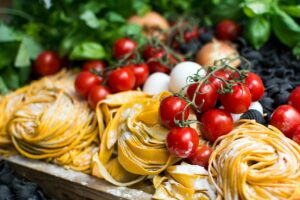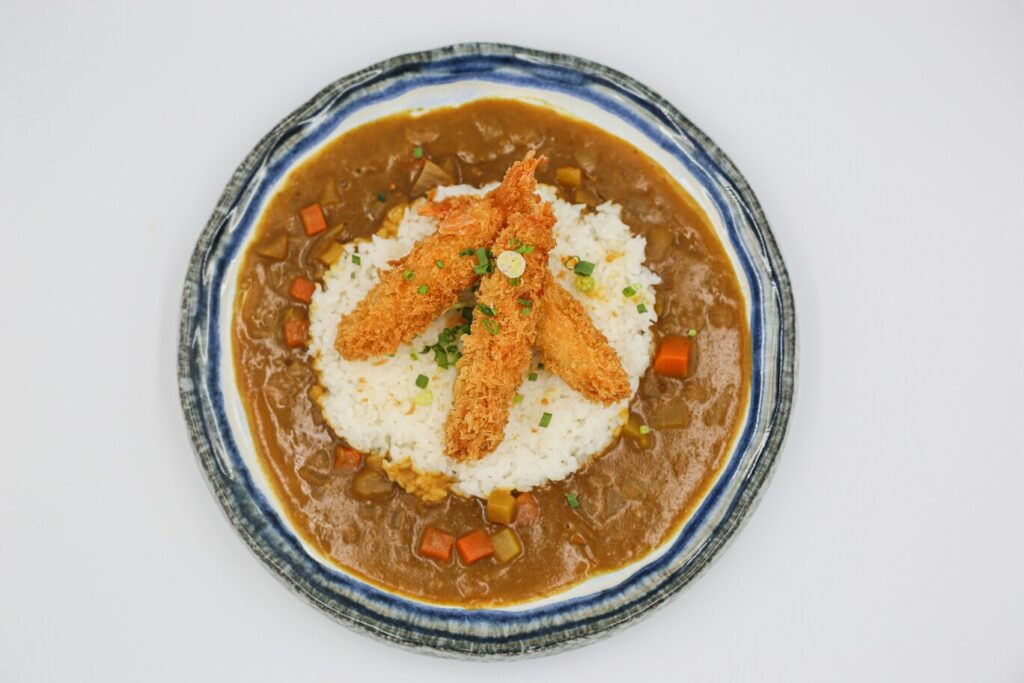
The first time I had Japanese curry, it was at a small counter in a basement food hall. It came in a stainless steel boat, a thick, dark sauce blanketing half the plate of white rice. It wasn’t fiery like the curries I grew up with. It was sweet, savoury, and deeply comforting. It felt like a hug in a bowl.
That single plate started a quiet fascination. I learned that what I had eaten was kare raisu, the most common form of Japanese curry. But it was only one chapter of a much larger story. The world of Japanese curry is not a monolith. It’s a spectrum of textures, flavours, tastes, and histories, shaped by naval trade routes, regional ingenuity, and a distinctly Japanese talent for adopting and perfecting foreign ideas.
To understand Japanese curry is to taste your way through its three main forms: the thick, familiar Kare Raisu; the light, spiced Soup Curry from Hokkaido; and the deep, elegant Ōfū Karē or European-style curry. Each one tells a different story about Japan’s culinary soul.
Kare Raisu: The Taste of Home
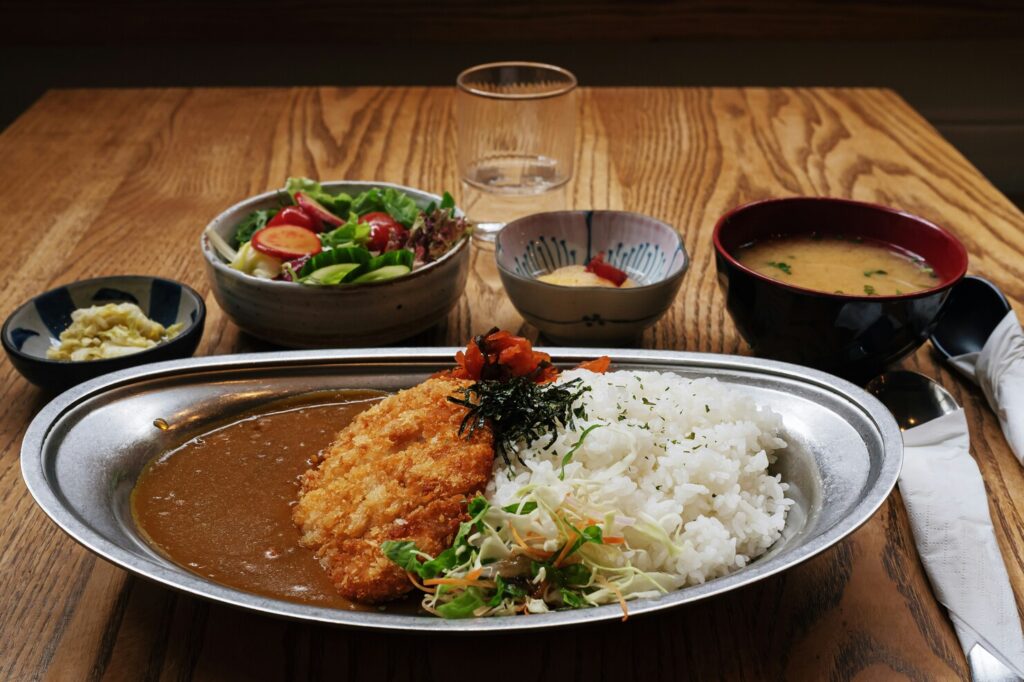
A Familiar Comfort – Iconic Food
This is the Japanese curry most of us know. Kare Raisu is among the most popular curry dishes served across Japan. It’s the version made in homes, served in school cafeterias, and found in countless casual eateries across Japan and Singapore. Its defining feature is its thickness, a rich, gravy-like consistency achieved with a roux, often from a convenient block of curry paste. It’s a stew at heart, a humble combination of meat—usually pork, beef, or chicken—simmered with potatoes, carrots, and onions until everything is soft and yielding.
The Art of the Roux – The widely known Japanese Curry Rice
The flavour profile is gentle: more savoury than spicy, with an underlying sweetness that makes it incredibly approachable. Regular Japanese curry is known for its thick, stew-like consistency and is typically served over rice, setting it apart from other styles like soup curry. It’s designed to be ladled over a mound of sticky, short-grain rice, the sauce seeping into every grain. Often, a small pile of bright red fukujinzuke (pickled radish) sits on the side, its sharp, sweet crunch a perfect counterpoint to the curry’s richness.
Finding Kare Raisu in Singapore: Coco Ichibanya
While many places serve it, Coco Ichibanya has become a benchmark for accessible and consistent kare raisu. It’s not a quiet, artisanal spot; it’s a reliable chain where you can customize your plate to your exact preference. You choose your spice level, rice amount, and a vast array of toppings. Cheese curry, featuring melted cheese as a topping, is a popular choice among diners for its creamy richness.
My go-to is the Pork & Shrimp Cutlet Omelet Curry, which is often considered the most popular menu item at Coco Ichibanya. The curry sauce is exactly as it should be—thick, glossy, and mild. A thin, creamy omelette drapes over the rice, and a perfectly fried pork katsu sits atop it all. The crunch of the panko-crusted pork, the softness of the egg, and the enveloping warmth of the curry create a harmony of textures and familiar flavours. It’s not a dish that challenges you. It’s one that welcomes you.
- Where to find it: Multiple Coco Ichibanya outlets across Singapore.
- Price Range: $15 – $25 per person.
- What it is: The quintessential, comforting Japanese curry rice experience, made to order.
Sapporo Soup Curry: A Japan’s North Hokkaido Innovation
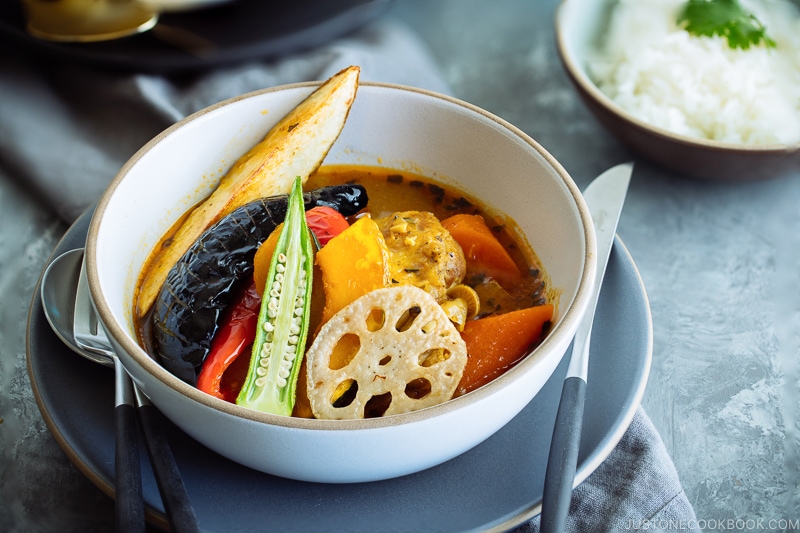
A Lighter, Spicier World
Travel north to Hokkaido, and you’ll find a completely different expression of Japanese curry. Born in Sapporo in the 1970s, Soup Curry—or Sūpu Karē—is a modern revolution. It throws out the roux entirely, opting instead for a thin, complex, and aromatic broth. The soup base is carefully crafted with a blend of spices and aromatics, forming the foundation of the dish’s unique flavor. Vegetables are a central element of the dish. A popular variation, known as vegetable soup curry, highlights the nourishing, wholesome qualities of fresh, locally sourced vegetables, making it especially appealing to health-conscious diners. This isn’t a stew; it’s a soup.
A Bowl of Contrasts – Japanese Recipes with Fresh vegetables
The influences are broader here, drawing from Indian and Southeast Asian spice palettes. The broth is light but layered with the distinct notes of spices like cardamom, clove, and turmeric. It’s served with a separate plate of rice, meant for dipping, allowing you to control the ratio of soup to grain in every bite.
The ingredients are not simmered into submission. Instead, they are cooked separately—often grilled or fried—and arranged beautifully in the bowl. Some vegetable ingredients are deep fried using the Japanese su-age technique, which involves deep frying vegetables without batter to preserve their vibrant colors and natural flavors, making vegetables a central element of the dish. After frying, the vegetables are typically drained on a wire rack to maintain their crispness and prevent sogginess. You’ll find large, colourful chunks of pumpkin, lotus root, eggplants, and bell peppers alongside a signature fall-off-the-bone chicken leg. Eating Hokkaido Soup Curry is an active, engaging experience.
The Best Hokkaido Soup Curry Singapore: Suage (Closed)
For a taste of Hokkaido’s famous soup curry, Suage was the go-to restaurant in Singapore. Originally from Sapporo, its Singapore outpost faithfully recreated the experience, down to the warm, minimalist space accented with wood for a grounded, cozy vibe.
The restaurant’s signature dish, the Crispy Shiretoko Chicken & Vegetables Soup Curry, was a standout, offering a slice of Hokkaido on every plate. The delicious broth, available in various bases, was fragrant and invigorating. The standard Suage soup, savoury with a subtle tomato sweetness, paired beautifully with the chicken leg, boasting perfectly crisp skin and tender meat. The accompanying vegetables—a vibrant mix of broccoli, potato, carrot, and a sweet corn fritter—were cooked to perfection, maintaining their textures and distinct flavors. This hearty vegetable soup highlighted the natural sweetness and flavors of the fresh, colorful vegetables, making it both nourishing and comforting. It was a dish that balanced health and indulgence, showcasing the culinary creativity of Hokkaido.
Though Suage has closed its doors in Singapore, it remains fondly remembered as one of the best restaurants outside Japan to experience this unique, soulful dish.
Ōfū Karē: The European-Japanese Style Refinement
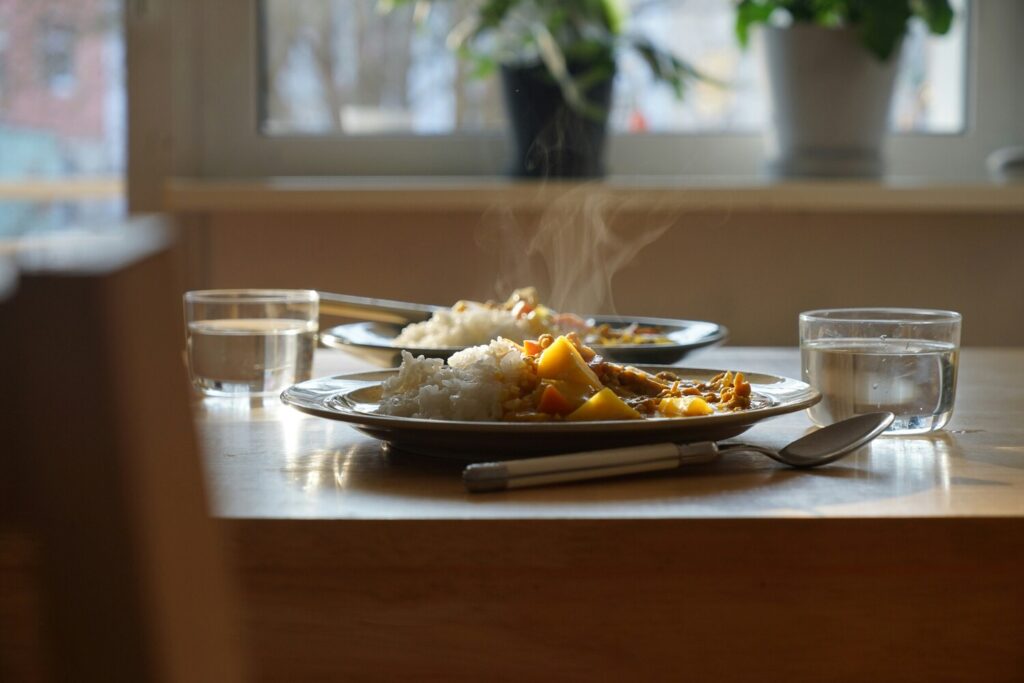
The Slow-Cooked Soul
The third style, Ōfū Karē, or European-style curry, is the most refined of the trio. Born in the elegant cafés and Western-style restaurants of Tokyo, it takes inspiration from French cooking, particularly the techniques behind a rich demi-glace. This is curry as an object of craft and patience. Onions are slowly caramelized over low heat, allowing their sweetness to develop fully without burning. The sauce is then simmered gently over low heat as well, ensuring the flavors meld and deepen without risk of overcooking.
A Symphony of Deep Flavours
The base isn’t a simple roux but a long, slow process. Onions are caramelized for hours until they are sweet and jammy. Beef stock, red wine, and butter are added, creating a sauce that is velvety, luxurious, and impossibly deep. The flavour is a complex dance of sweet, smoky, and savoury umami notes, with just a hint of spice in the background. A touch of garam masala is often added to the sauce during cooking, enhancing its aromatic qualities and adding depth to the overall flavor. It is a darker, more intense curry experience.
This style is often served in old-world establishments where the sauce itself is the star, the result of a recipe perfected over decades.
Discovering Ōfū Karē in Singapore: The Curry Culture
True Ōfū Karē is a rare thing, a whisper rather than a shout. In Singapore, finding a place that truly embodies its spirit feels like searching for a forgotten melody. It is a style of curry born from time and patience, a deeper, more intense experience than its more common cousins.
Imagine a sauce that is velvety, almost polished, darker and richer than what you might expect. It holds the complex dance of sweet, smoky, and savoury umami, with just a ghost of spice lingering. The beef, simmered until it yields completely, melts into the rich depths. This is a powerful, contemplative meal, one that speaks of a quiet commitment to process, to letting flavours deepen and evolve over hours. It’s not an everyday comfort; it’s a dish for reflection, a nod to a refined art of cooking that embraces European influences to create something uniquely Japanese, profoundly elegant.
Tip: Your best chance for experiencing Ōfū Karē is probably at the finest izakayas in Singapore, where skilled chefs may craft this rich, slow-cooked curry as a special dish just for you. Keep an eye out and don’t hesitate to ask — these hidden gems often serve Ōfū Karē as a rare, exquisite treat that showcases the depth and elegance of Japanese curry craftsmanship.
Japanese Recipes vs the World’s Iconic food
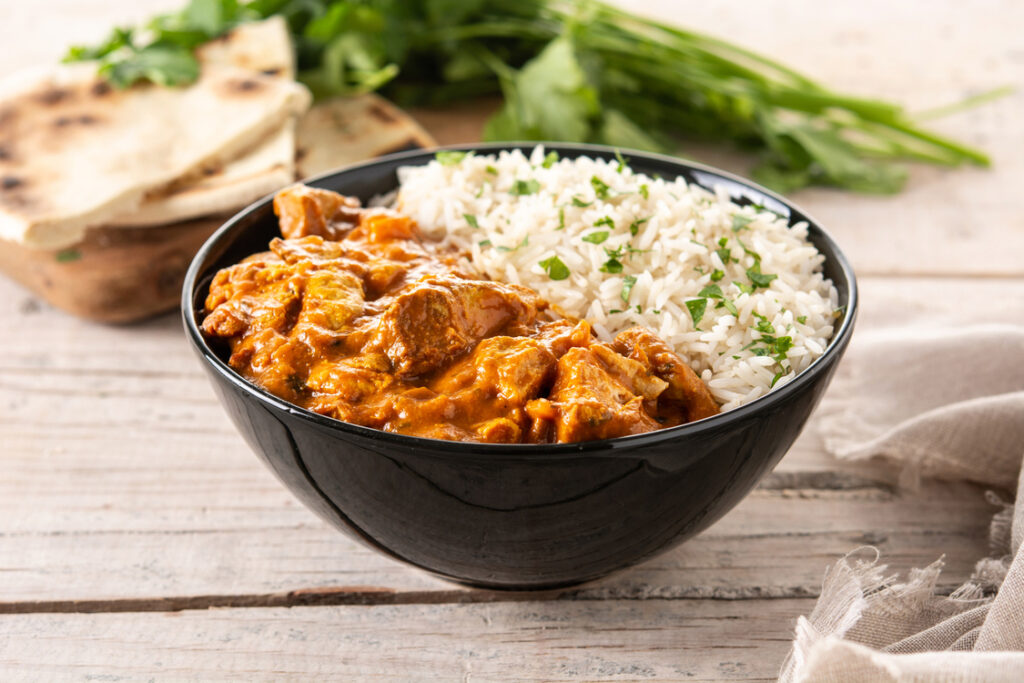
Japanese curry rice & the Malay curry rice
Japanese curry rice is a local dish beloved for its thick, rich sauce made using curry roux and a blend of curry powder. Unlike the lighter, spiced Malay curries, typical Japanese curry features a hearty stew-like texture with tender chunks of meat and vegetables like potatoes and carrots simmered to golden brown perfection. The curry is usually served over rice in a small bowl, making it a comforting and filling meal. The use of chicken bones in the broth adds depth and richness, distinguishing it from the more aromatic Malay versions.
Japanese Style Hokkaido Soup Curry & the Chinese Soup Curry
Hokkaido soup curry is characterized by its light curry flavoured soup, making it more of a soup dish than a thick curry. The broth is infused with a complex blend of curry powder and spices, often simmered with chicken bones for a flavorful base.
Fresh vegetables such as eggplant and bell peppers are typically deep-fried to vibrant golden brown hues and served alongside tender chicken legs. This style encourages dipping the rice into the curry soup rather than mixing, a contrast to the Chinese soup curry which tends to be less spicy and more broth-focused, often designed to aid digestion with milder seasoning and lighter ingredients.
Many renowned soup curry restaurants are located near Susukino Station, making them easily accessible to visitors exploring Sapporo.
Ōfū Karē vs the Indian Curry
Ōfū Karē, or European-style Japanese curry, elevates traditional Japanese curry by focusing on slow-cooked, caramelized onions and a rich sauce that balances sweetness and spice, often using curry powder three times during preparation to layer flavors.
It is typically cooked in a heavy bottomed pot to develop depth and served with golden brown meats and vegetables. Indian curry, in contrast, is known for its bold use of spices and curry powder, often with a thinner curry soup base and a wide variety of vegetable curry options. While Indian curries emphasize complex spice blends and heat, Ōfū Karē offers a refined, mellow taste that appeals to regular customers seeking comfort and elegance.
For those interested in exploring more about Japanese curry and other authentic Japanese culinary delights, a wealth of information and detailed guides can be found at the live japan’s website. This comprehensive travel and lifestyle platform offers extensive content on Japan’s food culture, including in-depth articles, restaurant recommendations, and cultural insights that help deepen your understanding and appreciation of dishes like Hokkaido soup curry, traditional Japanese curry rice, and much more.
A Final Word on Japanese Curry
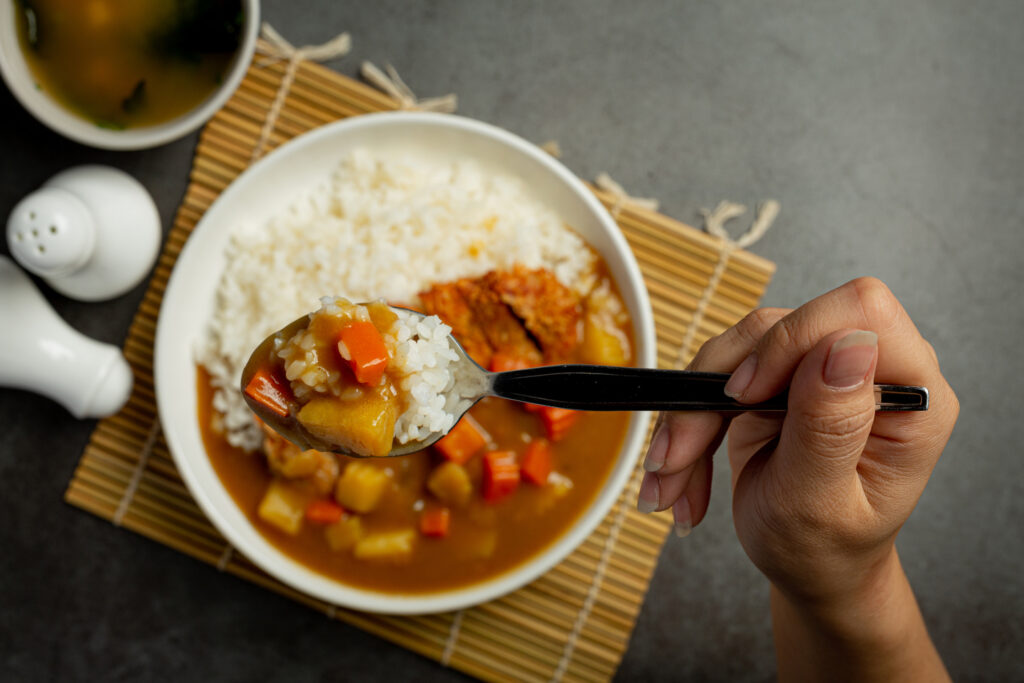
From the thick, comforting embrace of kare raisu to the vibrant, spicy broth of Hokkaido soup curry, and the deep, elegant refinement of ōfū karē, Japanese curry is a dish of many faces. As a true soul food, Japanese curry holds a special place in the hearts of people across Japan, offering warmth, nostalgia, and a sense of belonging. Each style offers a different window into the country’s ability to adapt, innovate, and perfect.
There is a curry for every mood: the one that reminds you of home, the one that awakens your senses, and the one that makes you pause and appreciate the slow passage of time. The next time you crave the best Japanese curry in Singapore, perhaps ask yourself not just what you want to eat, but what story you want to taste.






